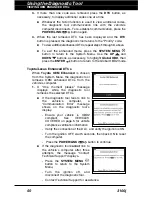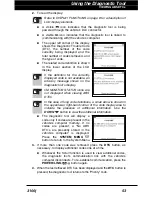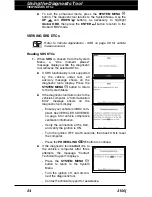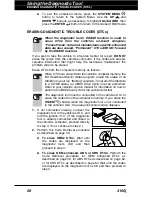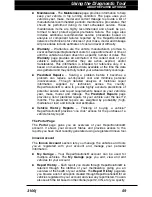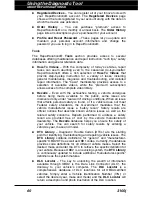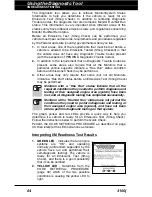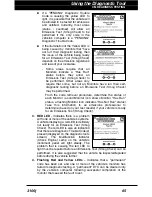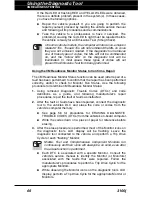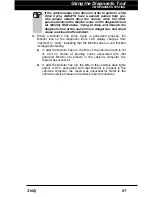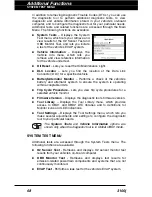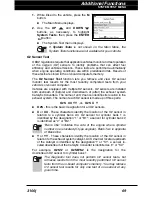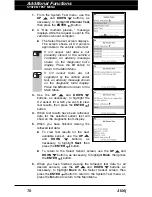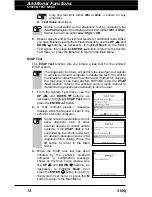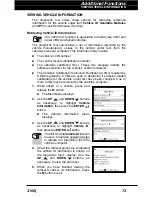
Using the Diagnostic Tool
I/M READINESS TESTING
62 3100j
2.
Visit www.innova.com, download and install the latest PC-Link soft-
ware for your Scan Tool. Select the
Support
tab, then choose
Manuals and Software
. Use the drop-down menu provided to
select your tool Category and tool Model to download the latest PC-
Link software.
3.
Connect the diagnostic tool to your PC using a Mini USB cable
(cable included).
Your default web browser launches automatically and connects
to the www.innova.com website.
4.
Login to your RepairSolutions® account using your registered
Address
and
Password
.
If you have not yet established an account, you must register
for a FREE RepairSolutions® account before proceeding.
I/M READINESS TESTING
I/M is an Inspection and Maintenance program legislated by the
Government to meet federal clean-air standards.
The program requires that a vehicle be taken periodically to an
Emissions Station for an "Emissions Test" or "Smog Check,” where the
emissions-related components and systems are inspected and tested
for proper operation. Emissions Tests are generally performed once a
year, or once every two years.
On OBD2 systems, the I/M program is enhanced by requiring vehicles
to meet stricter test standards. One of the tests instituted by the Federal
Government is called I/M 240. On I/M 240, the vehicle under test is
driven under different speeds and load conditions on a dynamometer for
240 seconds, while the vehicle's emissions are measured.
Emissions tests vary depending on the geographic or regional
area in which the vehicle is registered. If the vehicle is
registered in a highly urbanized area, the I/M 240 is probably
the type of test required. If the vehicle is registered in a rural
area, the stricter “dynamometer type” test may not be required.
I/M Readiness Monitors
I/M Readiness shows whether the various emissions-related systems on
the vehicle are operating properly and are ready for Inspection and
Maintenance testing.
State and Federal Governments enacted Regulations, Procedures and
Emission Standards to ensure that all emissions-related components
and systems are
continuously
or
periodically
monitored, tested and
diagnosed whenever the vehicle is in operation. It also requires vehicle
manufacturers to automatically detect and report any problems or faults
that may increase the vehicle's emissions to an unacceptable level.
The vehicle's emissions control system consists of several components
or sub-systems (Oxygen Sensor, Catalytic Converter, EGR, Fuel
System, etc.) that aid in reducing vehicle emissions.
To have an efficient Vehicle Emission Control System, all the emissions-
related components and systems must work correctly whenever the
vehicle is in operation.
Summary of Contents for 3100j
Page 1: ......
Page 104: ...Notes 102 3100j ...
Page 105: ...Notes 3100j 103 ...
Page 106: ...Notes 104 3100j ...
Page 108: ......



